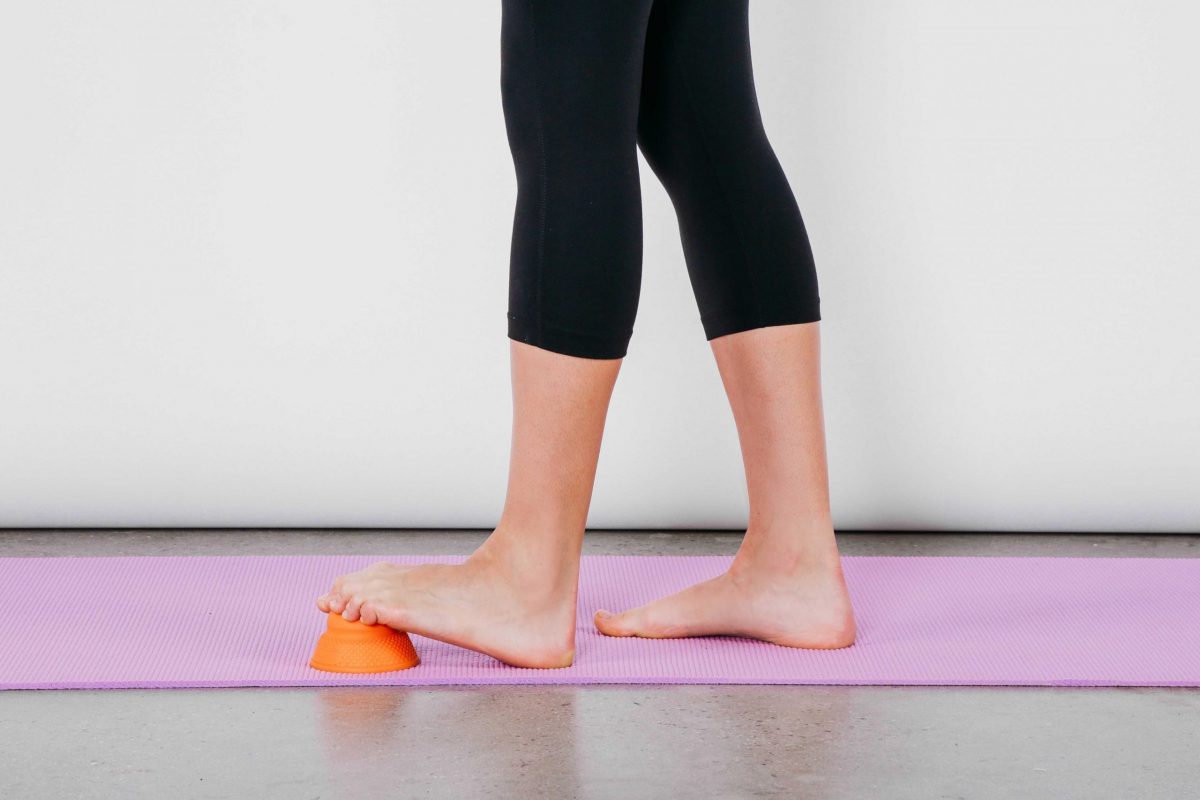Are you afraid of twisting your ankle while working out? It’s quite common to come down with an ankle sprain; only the pain is not so easy to make peace with which makes is so important to learn how to strengthen your ankles.
It’s awful and it takes a long time to cure. The worst part of the curing is the fact that you will be grounded for months.
As bad as an ankle injury may be, it wouldn’t make sense to quit sports and avoid fitness training for fear of ankle injuries, so the best option is to go for preventive remedies like compression ankle sleeves. These compression garments apply mild pressure, improve blood flow, stabilize and support the joint, and prevent as well as cure injuries.
Ankle sleeves are not enough though: you must strengthen your joints and increase flexibility with exercise. Internal strength in combination with compression garments will go a long way in improving your performance.
What Is Compression Ankle Sleeves?
Compression ankle sleeves are one-piece, stretchy garment cover for the ankles. They are worn on and around the ankles. The fabric used is stretchy but towards the tighter side to put pressure on the ankles for a balanced blood flow in this area.
It is a great accessory for compression therapy; it helps prevent injuries and makes for a fast and easy recovery process.
Do Ankle sleeves Help To Prevent Injuries?
Ankle sleeves are great for athletes who need to put a lot of pressure on the ankle and twist it in many ways. Ankle sleeves form a layer of safety and external support for the ankle joint and prevent injuries like plantar flexion or any other injury caused by acute twisting of the foot or ankle.
The compression sleeves also provide support and relief to the joint by improving blood flow. This leads to quicker wound and inflammation healing as well.
How Can I Strengthen My Ankles
Ankle joint is a sophisticated, even delicate combination of ligaments, tendons, bones, and muscles. There is plenty of space internally to compensate for injuries, stretching, and twisting. Externally, you can wear a compression ankle sleeve to upgrade your security against injuries, inflammation, and muscle tearing. In addition, there are some great exercises to boost flexibility and increase the innate strength of the joint.
First, we will talk about how the external support, i.e., compression ankle sleeves, help strengthen the ankle. Next, we will figure out some good moves for the ankle joint.
Benefits Of Compression Ankle Sleeves:
Here are the chief benefits of wearing a pair of compression ankle sleeves.
Stabilize And Support Ankle Joints
Like we discussed earlier, the ankle joint is delicate and sophisticated. Although it is built perfectly to bear the pressure of flexing movements and extreme burden without budging, there are times when it may just snap. Oops!
You can use ankle sleeves if you are performing tasks where you can easily twist your ankle a little too much, like football, weight lifting, running in rocky terrain, rugby, dancing, stretching, and many more situations. Stay safe from sudden shocks and badly -timed injuries with a pair of ankle sleeves.
Brace your ankles for better support and greater performance with these simple garment sleeves. They are not very expensive, but they offer perfect security against acute stretching and muscle tearing.
Avoid Future Injuries
You can avoid injuries when your ankles are protected and stabilized with an extra layer of protection. Compression sleeves keep your ankles in a perfectly aligned condition with their firm stretch. The fact that extra blood is also pumped away means your ankles are better able to withstand injuries and sprains and strains.
Reduce Pain And Swelling
Compression sleeves are designed so that they apply just the right amount of pressure on your ankle and the surrounding areas. This pressure leads to increased flow of blood away from the ankle towards your heart. This means you will automatically avoid swelling and pain sensation with a pair of compression sleeves on.
Better Performance
With a strong layer protecting and balancing your ankles, you can exert more and move without fear of sprains and fractures. This confidence helps you perform better on the ground.
Ways To Support & Strengthen Your Ankle
1. Ankle Braces
Ankle braces are a perfect accessory for those who are in the rehab state after an injury. It restricts the full range of motion of your ankle and keeps the joint safe from stretching or twisting beyond the allowed limits.
You might think, why not just wear sleeves? The reason is braces are firmer, so they restrict motion more than stockings and compression sleeves. This means they are specifically for post-injury athletes, and they also prevent injury.
Compression sleeves are for support and stability while trying to give your best and stretch as much as you can.
2. Ankle Tape
Ankle tape is also a great way to support and stabilize your ankle joint by lowering stress on the joint, but it’s not for your daily routine. The tape rigidly winds around the joint and restricts movement to a greater extent. This is why it’s not for your active days; rather, they are post-injury specific.
3. Flexibility Exercises
External support, e.g., compression sleeve, is a great way to strengthen your ankle, but it will be great to train the joint for better internal support. Use some simple exercises to enhance flexibility, make it strong, and hedge against injury. The internal strength of the joint will go a long way in improving performance and endurance.
Exercise is the best thing to do to make the ankle stronger, especially after an injury.
Here are some great moves for the joint to train for flexibility.
Inversion
- Sit straight on the floor, legs straight
- Move your ankle inward; the toes should be facing the other leg
- This is a sort of side inversion of the foot
- Stretch as far as you go (move only your ankle joint)
- Hold the position
- Repeat on the other foot
Eversion
This is the opposite of the inversion move.
- Sit straight, legs stretched and spread, move the foot outward with toes pointing away from the other leg
- Stretch as far as you can go
- Hold the position briefly and let go
Dorsiflexion
- Back straight, legs spread in front, and stretch the foot towards your nose
- Move only your ankle joint
- Stretch only as much as you can without being hurt
- Hold the position and repeat on the other leg
Plantar Flexion
- Sit up, spread legs in front, you need to bend your foot away from your face, towards the ground
- Move only your ankle joint while performing the task
- Hold the position and let go
Ankle Rolls
- Sit straight on the floor, turn the toes towards the ceiling
- Now roll your ankles 360 degrees from left to right and right to left
- You should not try to do it too fast
- Slowly, seamlessly and gradually
- Let your muscles and bones align and realign well during the motion
- Repeat on both feet
- Only move your ankle and foot
4. Strength Exercises
Calf Raises
This is a great exercise for both your calves and ankles. The great thing about it is that you can even do it in the bathroom while brushing your teeth. Save time and strengthen up; it’s a double shot!
- Stand straight with your feet slightly apart
- Now shift your entire weight onto the toes and raise your body, straightening the calves
- Hold the position briefly
This is great to build calves and make ankles strong to avoid Achilles tendonitis and other common injuries, including plantar fasciitis.
Scissor Hops
This may take you back to memory lane when you did it in school and enjoyed it with your best friends. However, the good old scissor hops are still of great value for you.
- Stand straight with your legs shoulder-width apart
- Move your right leg in front of the left in a quick hop style (like you jumped a small step)
- Now move the right leg back and bring the left leg forward in the same quick motion
Do this exercise for 30 to 60 seconds to build strong ankles
Bounding
Bounding is a variation of running for greater flexibility of the joints.
- Run in wider stride; hop from one point to the other in a wider jumping style
- Try to keep the landing swift and fast by dorsiflexing your feet as you land
The landing motion should be very quick (flex your ankles, but do not strain them beyond your capacity)
Squat Jumps
Increase your ankle strength with squat jumps. It’s a compound exercise that strengthens muscles everywhere in the body. However, there are sure benefits for the ankle joint.
- Stand in a wide stance with your legs shoulder-width apart
- Now bend your knees and get into a sitting position (like there is a chair underneath you)
- As you straighten your knees and stand back up, do it in a short jumping style.
5. Balance Exercises
Stand On One Leg
- Stand on one leg and hold the other with your hand
- Stand for 30 seconds, in the beginning and increase this time as you get used to it
This is great for balancing as well muscle strengthening
Balance + Activity
- Balance on one leg and keep a ball in your hands
- Now throw it on the wall next to you
- Repeat `with the other leg
One Leg Mini Squat
This is a great balancing exercise. You can master the art of controlling your body with this seemingly simple but very demanding move.
- Squat on one leg ( it’s a half squat)
- Stretch out the other leg in front of you
- Get back straight up.
- You can do it ten times before you do it on the other leg
Conclusion
The ankle joint is a strong joint with a complex but sophisticated system of bones, ligaments, and tendons. It has the capacity to bear massive amounts of weight, flex itself in many different ways and still work perfectly. However, one can easily twist the ankle beyond its capacity and get hurt.
If you are into sports where you have to put your ankles to stress and flexibility, you should support your feet and ankles with external support systems like ankle wraps. You will enjoy exercising to increase the stability, flexibility, and strength of the ankle.








